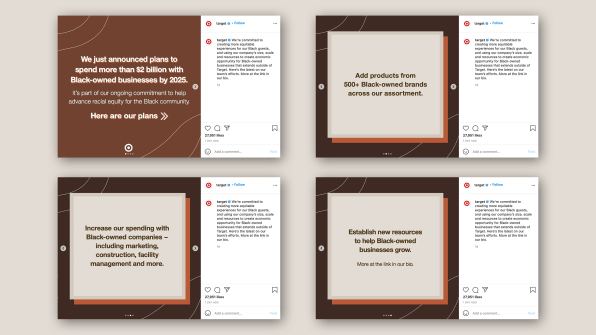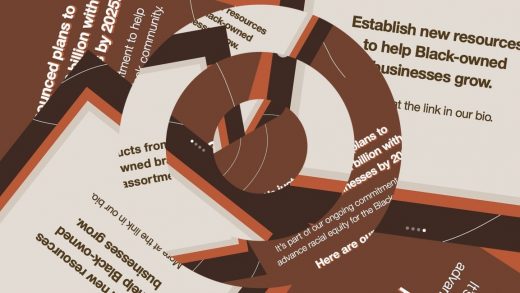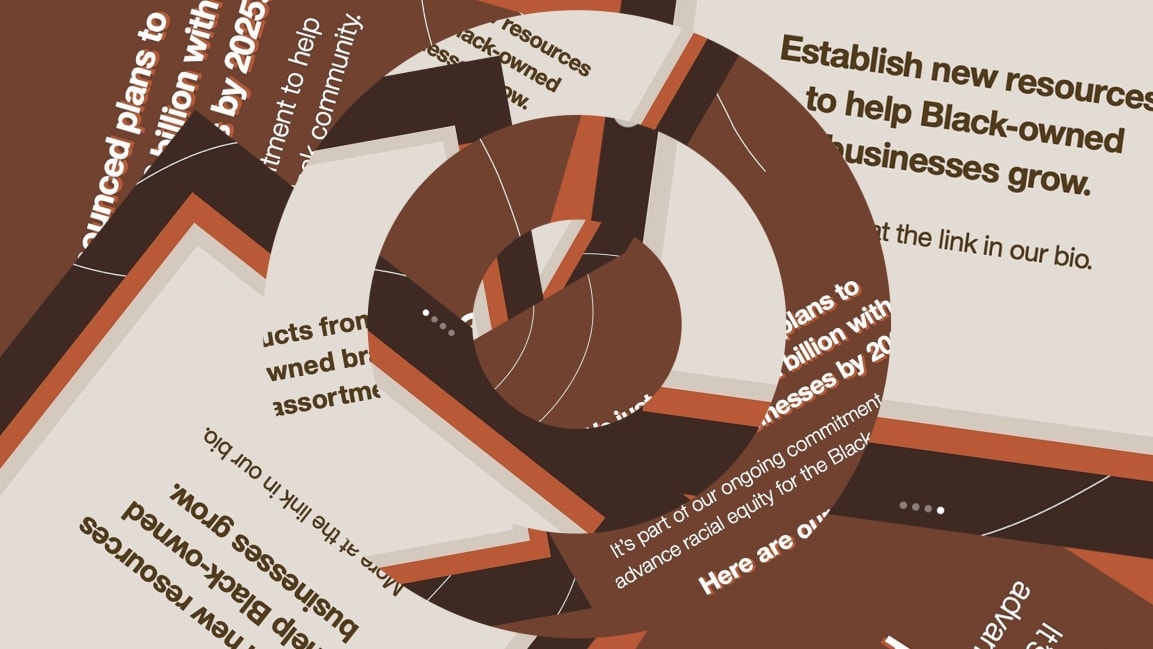Did Target steal this Black creator’s branding?
In an Instagram post Thursday, Target said it would invest $2 billion in Black-owned businesses by 2025. But it didn’t get off to a good start. The post’s visual look appears to co-opt the branding of a Black-run organization Target doesn’t support.
The post resembles the branding of a nonprofit organization called the 15 Percent Pledge, which asks brands to commit 15% of their total spending power to Black-owned businesses.

Target actually has nothing to do with the 15 Percent Pledge. In fact, Target declined to join the pledge, even though the organization has repeatedly called for Target’s support since last June. Target spokesperson Joshua Thomas denied the allegation that it copied the 15 Percent Pledge’s branding, saying that Target’s creative treatment for the announcement, “did not take inspiration from any third party in its creation.”
View this post on Instagram
Aurora James, a fashion designer and creative director, founded the 15 Percent Pledge last year following the death of George Floyd. She developed the 15 Percent Pledge logo and brand with graphic designer Ben Rabb, and she describes it as an aesthetic extension of the inclusive nude tones central to her clothing brand Brother Vellies.
View this post on Instagram
Target’s announcement similarly uses warm brown tones, drop shadows, and curved line illustrations. James points out that Target also placed its logo at the bottom of the post, which is identical to her organization’s logo placement in some assets. (This is not the first time that Target has used this graphic treatment—the retailer applied it to some posts last spring and summer.) “When Target decided to so casually and callously take elements from [our] assets and use them for their own promotion, it just underscores how unwilling they are to not only be accountable but truly collaborative,” James says. “They’re continuing in on this campaign to just take from the community instead of actually working with the community.”
View this post on Instagram
James denounced the move in an Instagram story. So did Rabb, saying, “Veiled branding to give the false impression that this is tied to @15percentpledge is truly crazy.” And in an Instagram post, 15 Percent Pledge wrote, “To be clear, even though their branding looks like it’s part of the Pledge, it is not.”
The 15 Percent Pledge asks brands to commit 15% of their shelf space—proportionate to the Black population in the U.S.—to Black-owned businesses. Companies from West Elm to Sephora to the Gap have all since joined. According to James, Target turned down offers to join the Pledge.
Target’s spokesperson says that Target supports Black communities and businesses in other ways. “It’s been important for us to commit and act in a way that fully leverages our size and scale as a large company, well beyond just the products we sell,” Thomas says. Thomas noted that the company donated $10 million last year to advance social justice and that the $2 billion the company pledged Thursday goes to an accelerator program and Black-owned marketing agencies and construction companies. He added that Target committed to increasing its representation of Black team members by 20% over the next three years and “has committed $10 million from Target and the Target Foundation to support nonprofit partners focused on addressing the systemic and structural barriers facing Black communities.”
But according to James, the fact that Target mirrored the 15 Percent Pledge’s branding for its announcement “signals a clear attempt to leverage the success of a Black-led movement, without putting in real work to support our community,” she says. “Any commitment to invest in Black people is a step in the right direction, but Target should formalize their commitment by signing the 15 Percent Pledge and working toward allocating 15% of their shelf space to Black-owned brands.” She also points out that Target made $93 billion in 2020. A $2 billion commitment over four years comes out to just $500 million per year—a paltry sum for a retailer of that scale.
“When we create visual identities we’re always trying to elicit something. That’s why design exists. You’re trying to elicit an emotion,” James says. “And they are trying to tap into all of the goodwill and hard work that Black women have been doing to hold these companies accountable by mimicking our creative intention and putting it out there in the world with zero commitment to accountability.”
(18)



